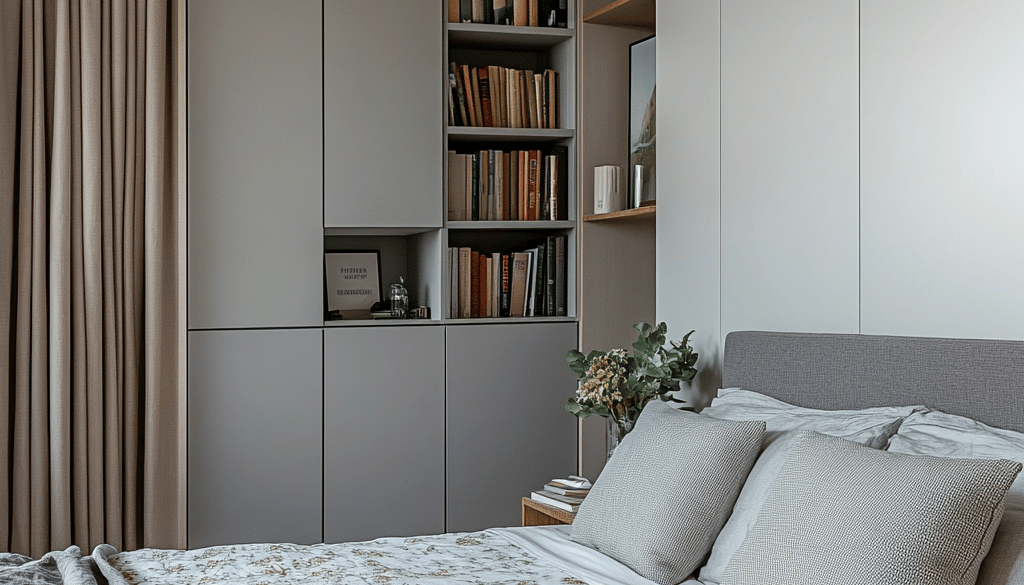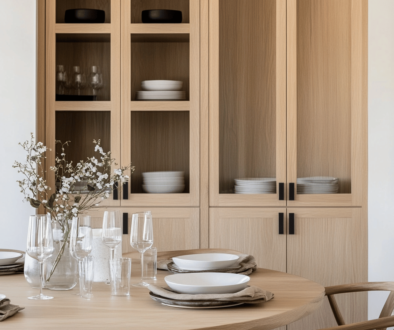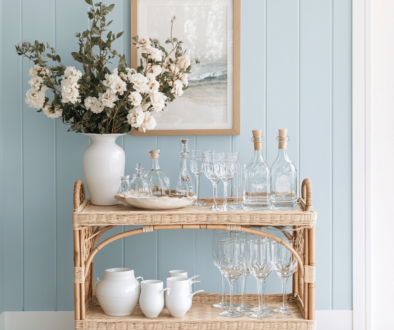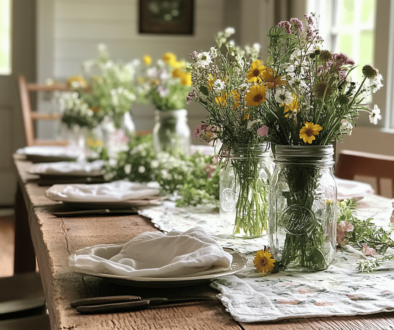Best Small Bedroom Layout Tricks: Making the Most of Your Space
As someone who’s lived in tiny apartments in major cities for over a decade, I’ve become somewhat of an expert at maximizing small bedroom spaces. Trust me, I’ve made every mistake in the book when it comes to bedroom layouts. But through years of trial and error (and many furniture rearrangements later), I’ve discovered some game-changing tricks that can make even the smallest bedroom feel spacious and serene.

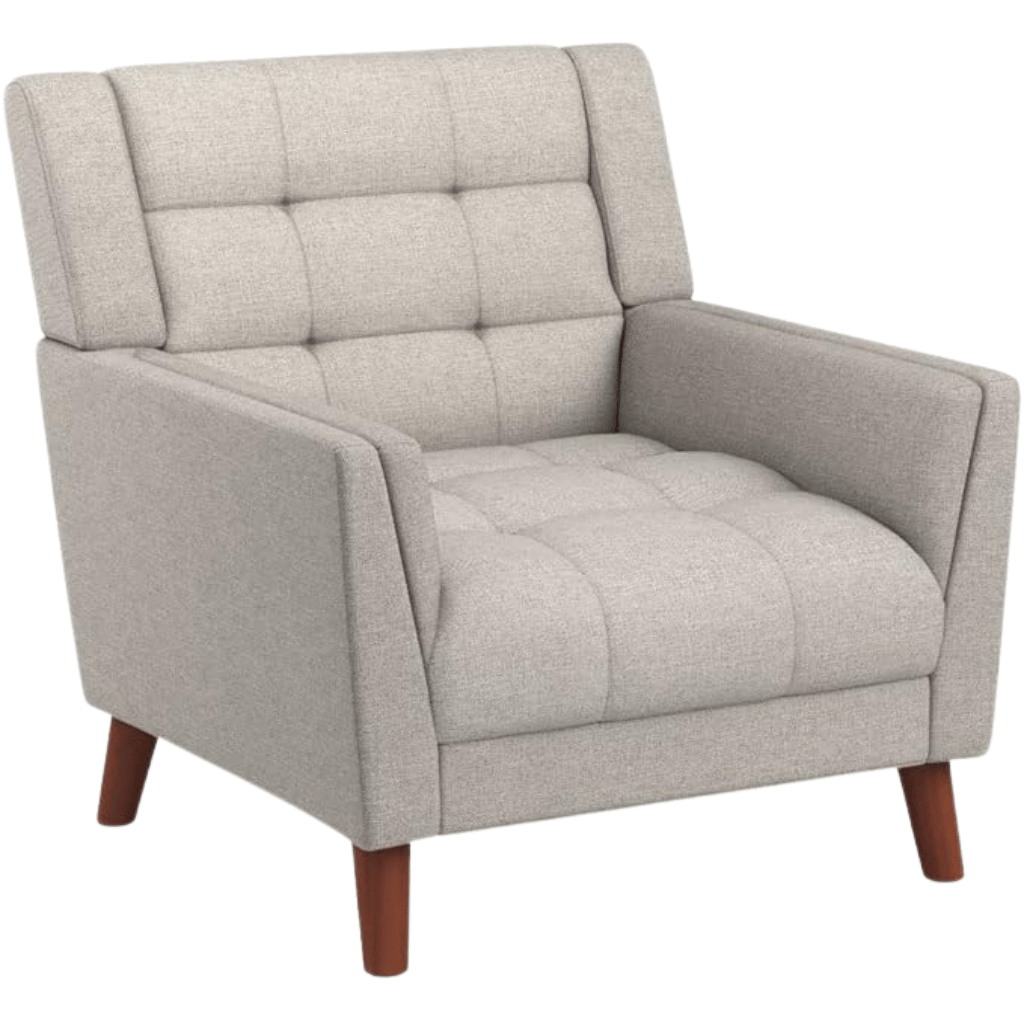
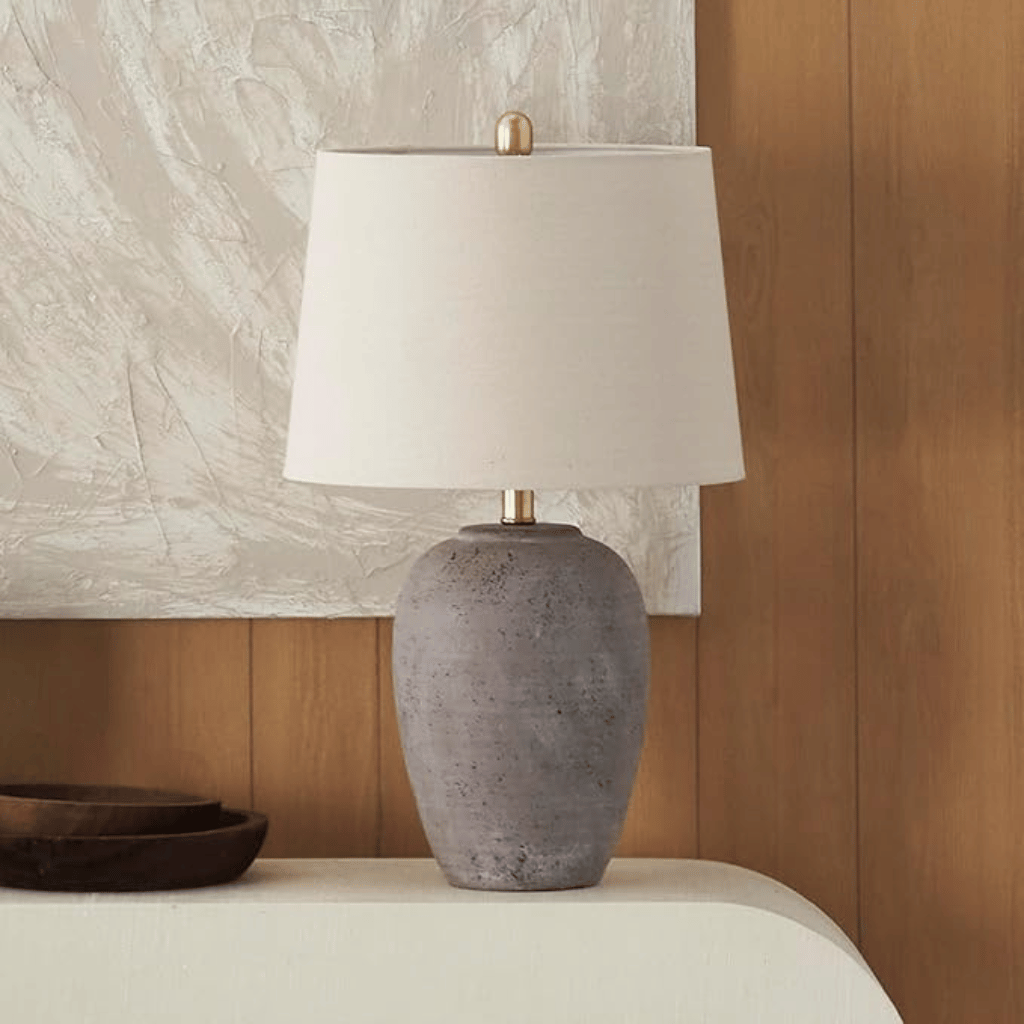

Start with the Bed Placement
The bed is always my starting point when planning a small bedroom layout. It’s usually the largest piece of furniture, so getting its position right sets the tone for everything else. I’ve found that pushing the bed against the longest wall often works best. This creates a natural flow through the room and maximizes the remaining floor space.
But here’s something I discovered that surprised me: sometimes, placing the bed diagonally in a corner can actually make the room feel bigger. I know it sounds counterintuitive, but this arrangement can create interesting triangular spaces that work perfectly for storage or a small bedroom reading nook.
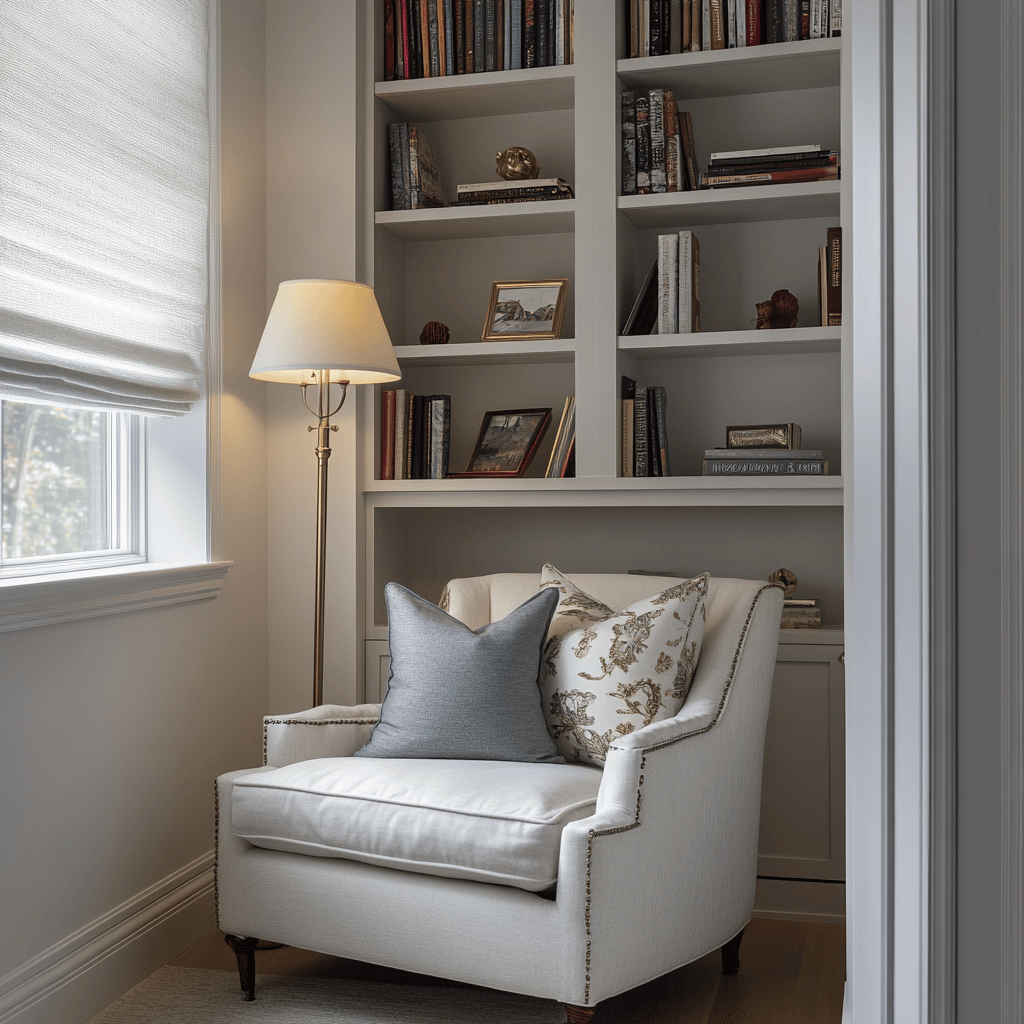
Use Vertical Space Like It’s Going Out of Style
When I first started organizing small bedroom spaces, I made the classic mistake of thinking only in terms of floor space. Now I know better. The walls are your best friends in a small bedroom. I’ve installed floating shelves above my desk, added a tall, narrow bookcase that reaches almost to the ceiling, and even mounted my reading light on the wall to free up precious nightstand space.
One of my favorite tricks is using the space above the bed for storage or display. A few floating shelves or a carefully secured storage unit can turn this often-wasted space into prime real estate. Just make sure anything you hang is properly secured – you don’t want midnight surprises!
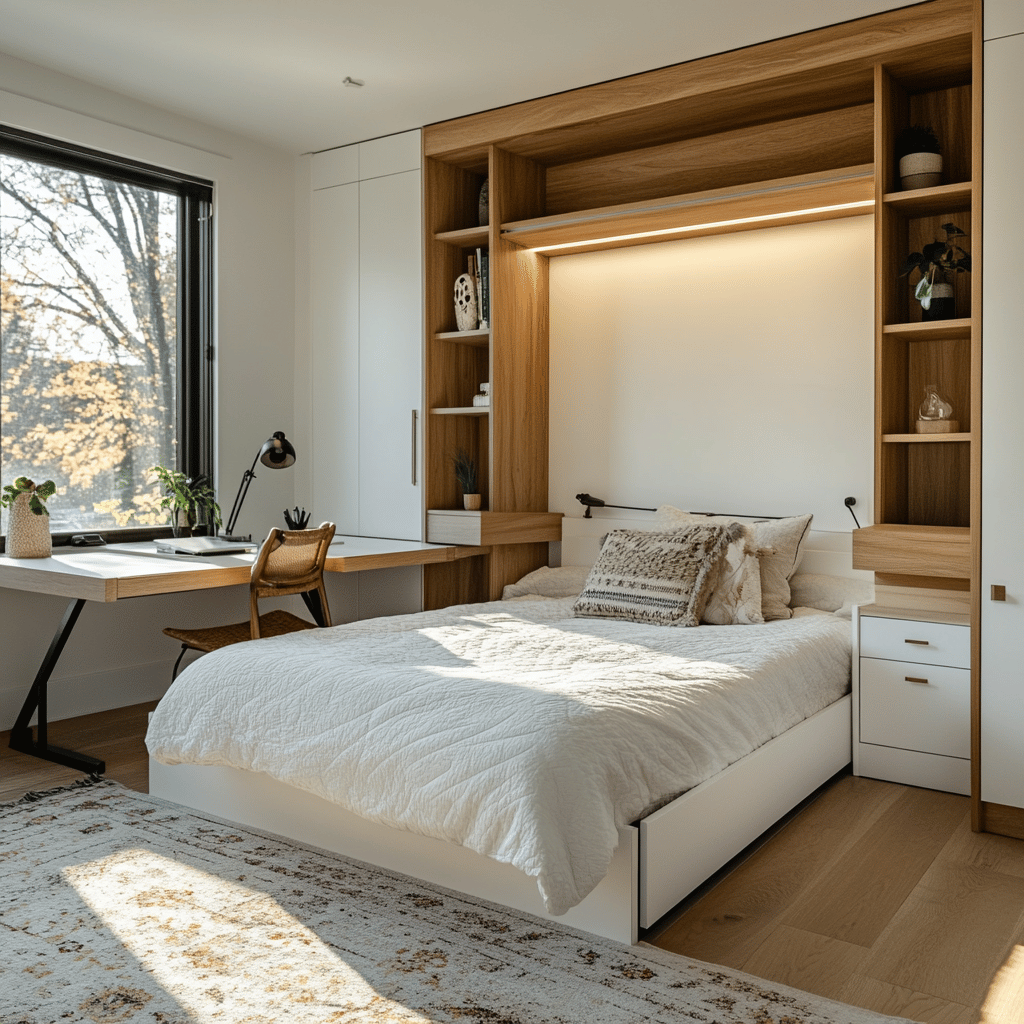
The Magic of Multifunctional Furniture
I remember the day I replaced my bulky nightstand with a small ladder shelf. It was a revelation! Not only did it provide the same surface area for my bedtime essentials, but it also offered additional storage space without eating up more floor area. This taught me an important lesson: in a small bedroom, every piece of furniture should earn its keep by serving multiple purposes.
Some of my favorite multifunctional pieces include:
- A storage ottoman that works as a seat and holds extra bedding
- A desk that folds down from the wall and becomes a sleek shelf when not in use
- A bed with built-in drawers underneath
- A mirror that opens up to reveal jewelry storage
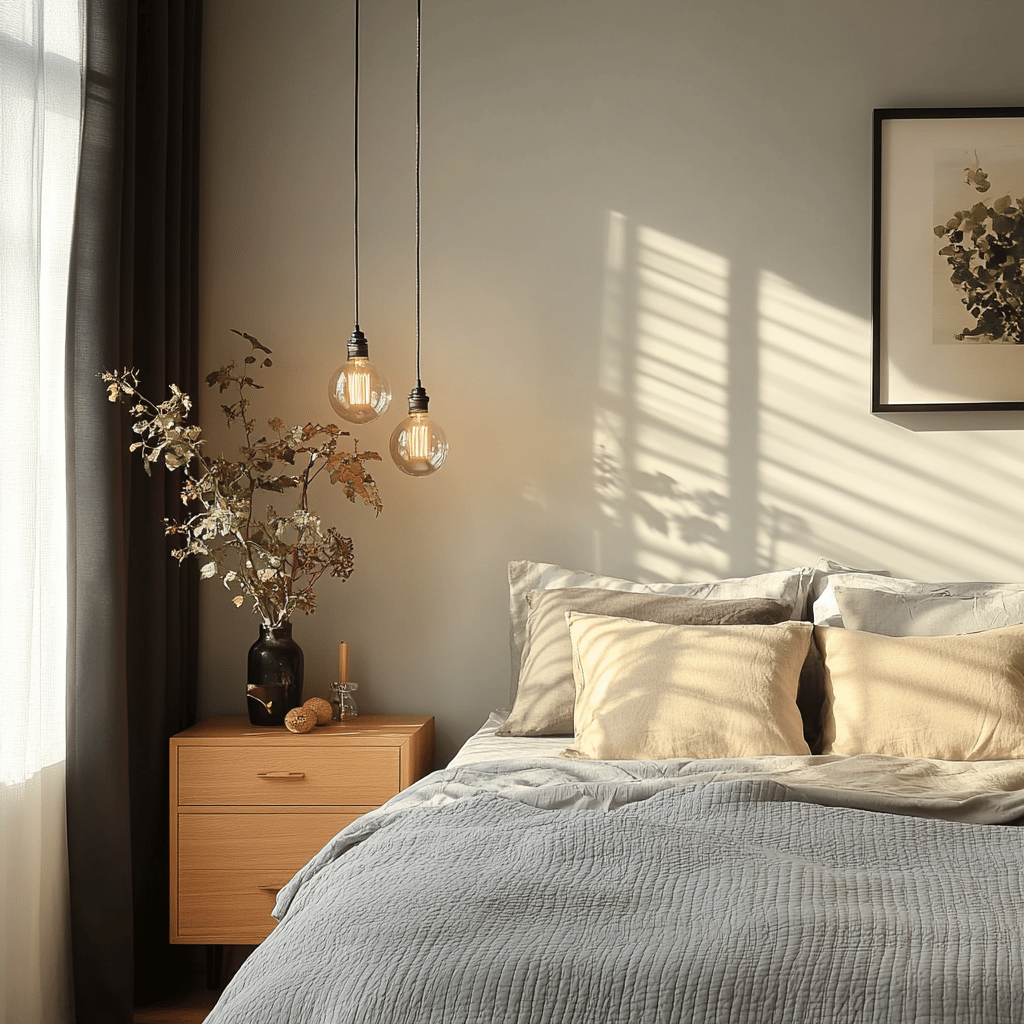
Create Zones Without Walls
Even in a small bedroom, I’ve found it’s important to create distinct zones for different activities. In my current room, I’ve carved out a small workspace by placing a compact desk near the window, separated from my sleeping area by a strategically placed area rug.
The key is using visual cues rather than physical barriers. Different lighting fixtures can help define spaces – I use a desk lamp for my work area and softer bedside lighting for my sleeping space. Even something as simple as the direction of your area rug can help delineate different zones within the room.
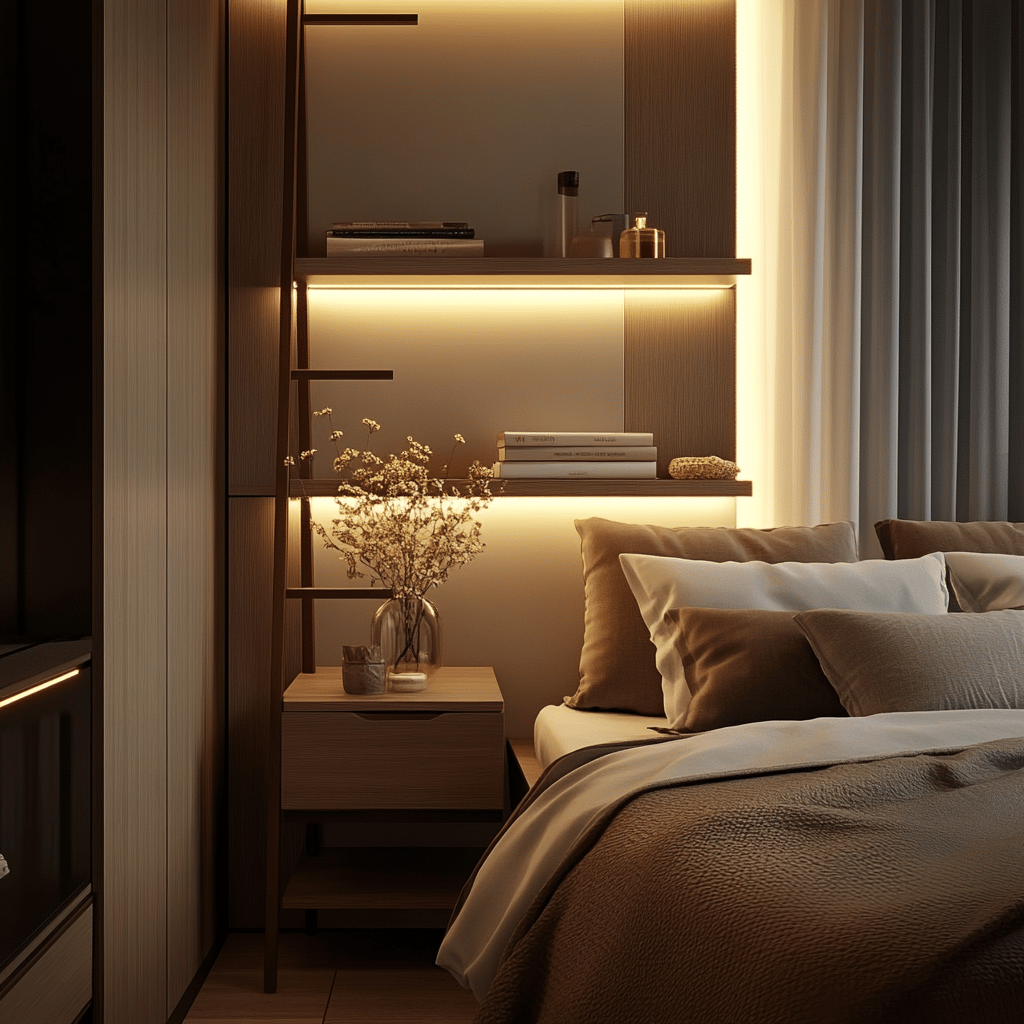
The Power of Proper Lighting
Speaking of lighting, this is an aspect of small bedroom design that I initially underestimated. I’ve learned that relying solely on a central ceiling light creates harsh shadows and makes the room feel smaller. Instead, I now use multiple light sources at different heights to create layers of illumination.
My current setup includes:
- Under-shelf LED strips for ambient lighting
- A adjustable wall-mounted reading light
- A small desk lamp for task lighting
- String lights along the headboard for a cozy atmosphere
This layered approach not only makes the room more functional but also creates the illusion of more space by eliminating dark corners.
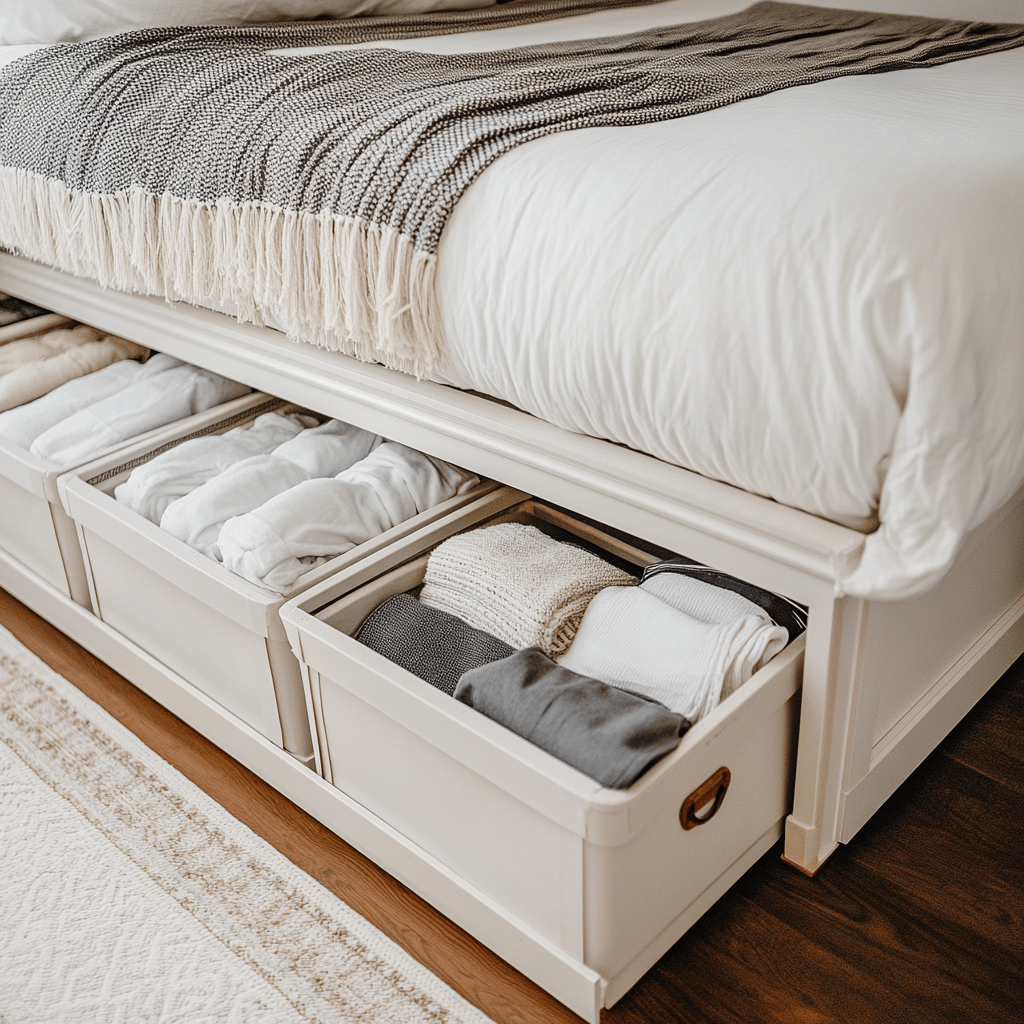
Smart Storage Solutions That Actually Work
Let’s talk about storage – the eternal challenge in a small bedroom. I’ve tried countless storage solutions over the years, and I’ve found that the key is thinking beyond traditional furniture pieces. For instance, I now use slim rolling carts that can slip into narrow spaces between furniture. These mobile storage units are perfect for items I need regular access to but don’t want cluttering up visible surfaces.
One of my most successful storage experiments was adding risers to my bed frame to create extra storage space underneath. This simple change added enough room to store several large storage bins, effectively creating a hidden closet under my bed.
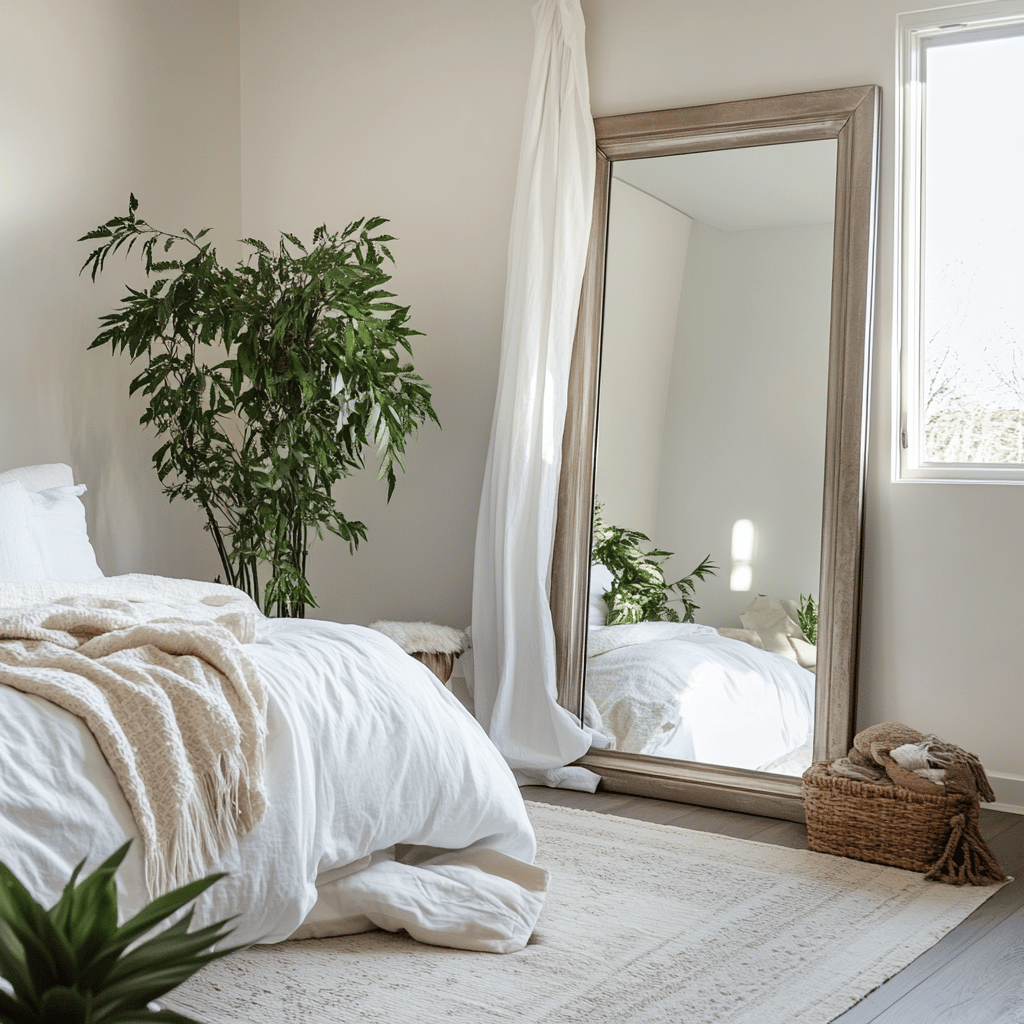
The Optical Illusions That Make a Difference
Through my experiments with small bedroom space design, I’ve discovered several tricks that can make a room appear larger than it actually is. Mirrors are the obvious solution, but placement is crucial. I position mirrors to reflect natural light and create the illusion of additional space. A full-length mirror placed near a window not only serves a practical purpose but also doubles the apparent size of the room.
Color choices also play a huge role. While I’m not suggesting everyone paint their room white (though it works!), I’ve found that using a monochromatic color scheme with subtle variations creates depth without overwhelming the space. In my current room, I use different shades of sage green to create interest while maintaining a cohesive look.

Decluttering: The Ongoing Battle
I’ll be honest – maintaining a clutter-free environment in a small bedroom is an ongoing challenge. I’ve developed a simple rule: for every new item that comes in, something must go out. This helps me maintain balance and prevents the space from feeling overwhelmed.
I also do regular “space audits” where I evaluate how effectively I’m using different areas of the room. Sometimes, what worked three months ago doesn’t work now, and that’s okay. Being flexible and willing to adjust your layout as your needs change is crucial in a small space.
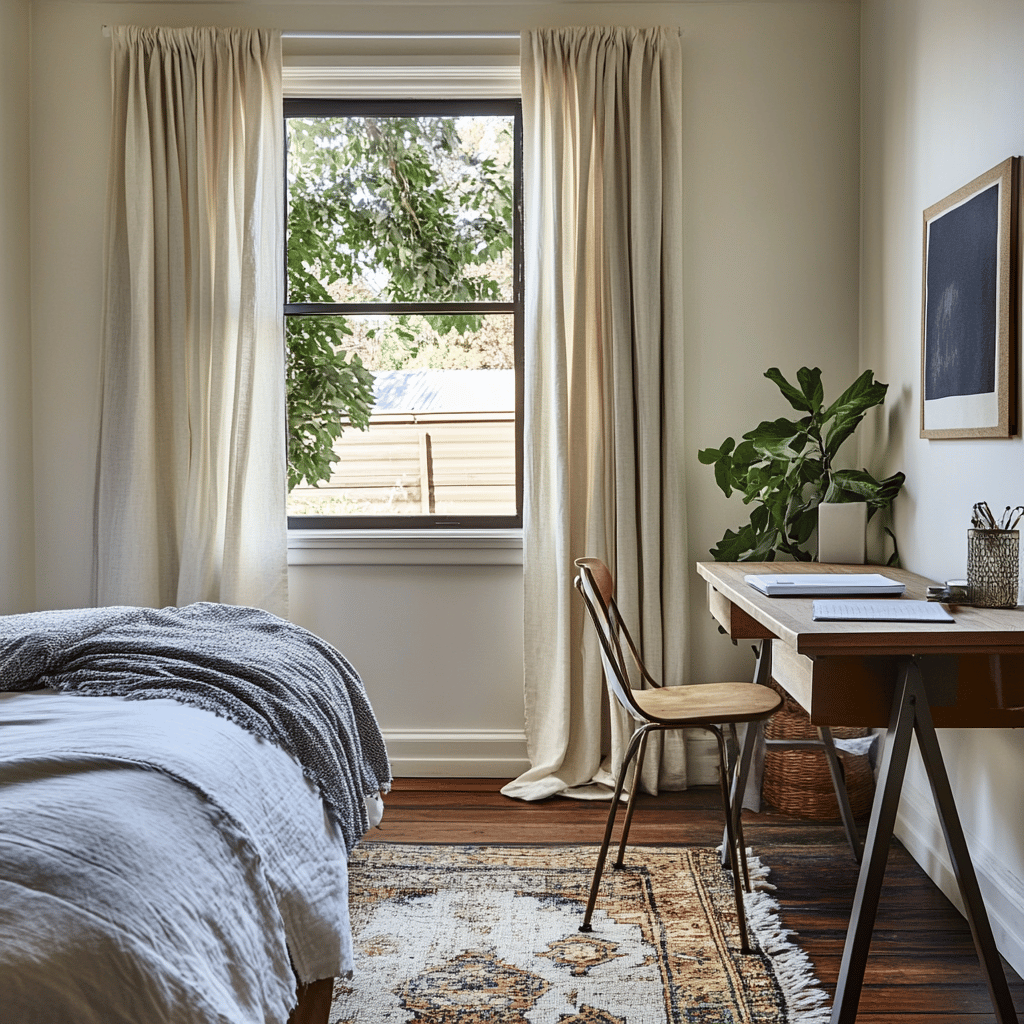
The Importance of Negative Space
One of the most valuable lessons I’ve learned is the importance of negative space – those empty areas that give your eyes a place to rest. In a small bedroom, it’s tempting to try to use every inch of space, but this often backfires by making the room feel cluttered and cramped.
I make sure to leave some walls free of decoration and maintain clear pathways through the room. These breathing spaces make the room feel more organized and spacious, even though I’m technically “wasting” usable space.
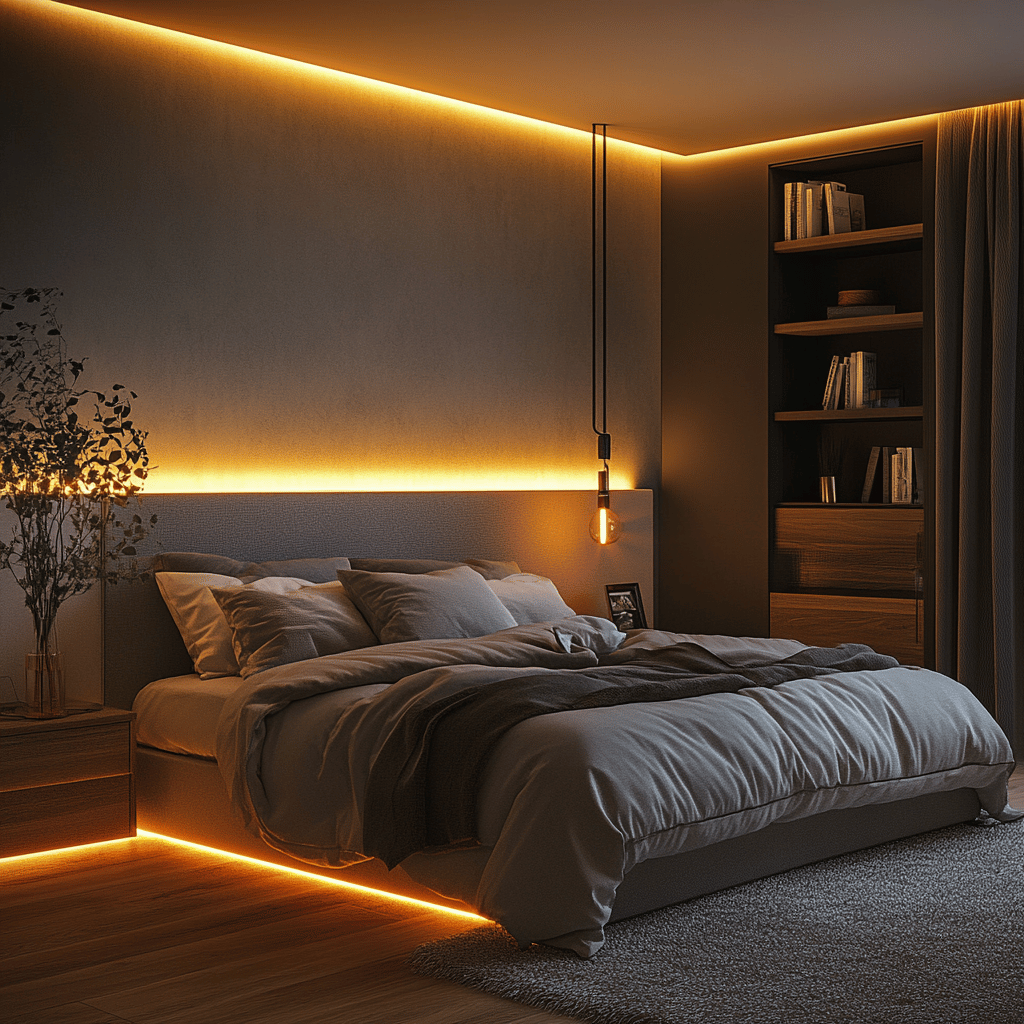
Making Technology Work for You
In today’s world, we all have various devices and their accompanying cords to contend with. I’ve found that planning for technology from the start makes a huge difference. I installed a small charging station inside my nightstand drawer, which keeps cords hidden but accessible. Cable management solutions like cord clips and cable ties help keep everything tidy and prevent the visual clutter that can make a small bedroom feel chaotic.
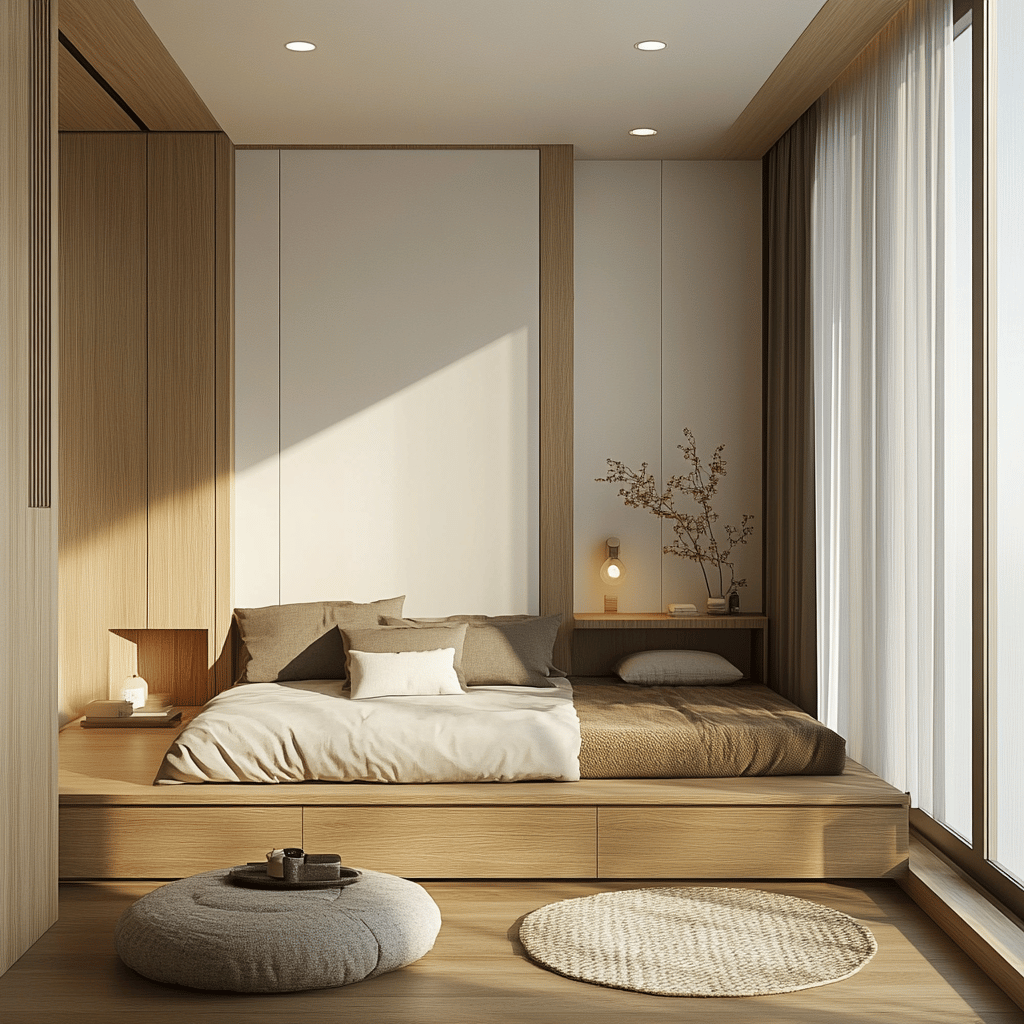
Final Thoughts
After years of living in and organizing small bedrooms, I’ve learned that the key to success isn’t just about clever storage solutions or space-saving furniture (though these certainly help!). It’s about creating a space that works for your specific needs while maintaining a sense of calm and order.
Remember, what works for one person might not work for another. The best layout for your small bedroom is one that supports your daily routine and makes you feel at ease. Don’t be afraid to experiment and adjust until you find what works best for you. After all, that’s exactly how I discovered all these tricks in the first place.
The most important thing I’ve learned is that a small bedroom doesn’t have to feel cramped or limiting. With thoughtful planning and creative solutions, even the tiniest bedroom can become a comfortable, functional, and beautiful space. It’s all about working with what you have and making smart choices that maximize every square inch while maintaining a sense of spaciousness and serenity.
If you love home decor and interior design as much as I do, check out these other articles I think you might like.
Creating a Cozy Reading Nook in Unused Living Room Corners

